|
|

|
 Dolphin Research.......................................................Christine M. Johnson
Dolphin Research.......................................................Christine M. Johnson
|
 |
 |
|
Visible & Invisible Displacement |
 |
| Johnson, C.M., Sullivan, J., Buck, C.L., Trexel, J. & Scarpuzzi, M. (2015) Visible & invisible displacement with dynamic visual occlusion in bottlenose dolphins (Tursiops spp).
Animal Cognition, 18, 179-193. |
|
GOALS OF RESEARCH:
|
Investigate the ability of bottlenose dolphins to use dynamic visual occlusion to solve visible and invisible
displacement tasks |
|
RATIONALE:
|
|
Anticipating the location of a temporarily obscured target - what Piaget (1954) called "object permanence" - is a critical skill, especially in hunters of mobile prey. Previous research with bottlenose dolphins (Jaakkola, et al., 2010) found they could predict the location of a target that had been visibly displaced into an opaque container, but not one that was first placed in an opaque container and then invisibly displaced to another container. We wanted to test whether, by altering the task to involve occlusion rather than containment, these animals could show more advanced object permanence skills. |
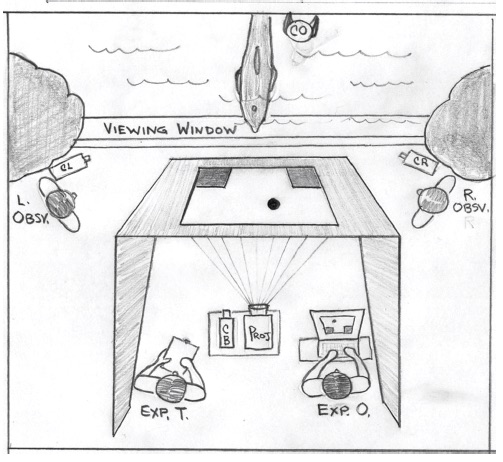 |
|
Projection Booth Set-up |
|
METHODS: |
Our subjects were 13 bottlenose dolphins housed at Rocky Point Preserve, Sea World. We projected dynamic visual displays at an underwater-viewing window and videotaped the animals' head moves while observing these displays.
In Experiment 1, the animals observed a small black disk moving behind occluders that shifted in size, ultimately forming one large occluder.
 |
Exp.1: Visible Displacement Test
Occluders gradually widen, to form one large occluder.
(Line illustrating disc's path not shown to dolphins.) |
In Experiment 2, we tested their invisble displacement abilities. The disk first disappeared behind a pair of moving occluders, which then moved behind a stationary occluder. The moving occluders then reappeared and separated, revealing that the disk was no longer behind them.
|
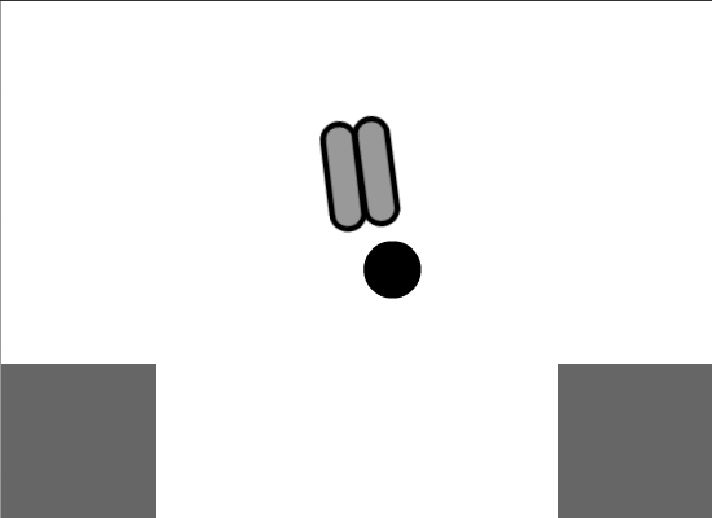 |
Exp.2: Invisible Displacement Test
Disc will disappear behind moving ovals, which will then temporarily move behind stationary occluder. |
|
RESULTS:
|
|
As expected, in Exp 1 subjects tracked the disc behind the occluder, with increasing frequency as occlusion increased.
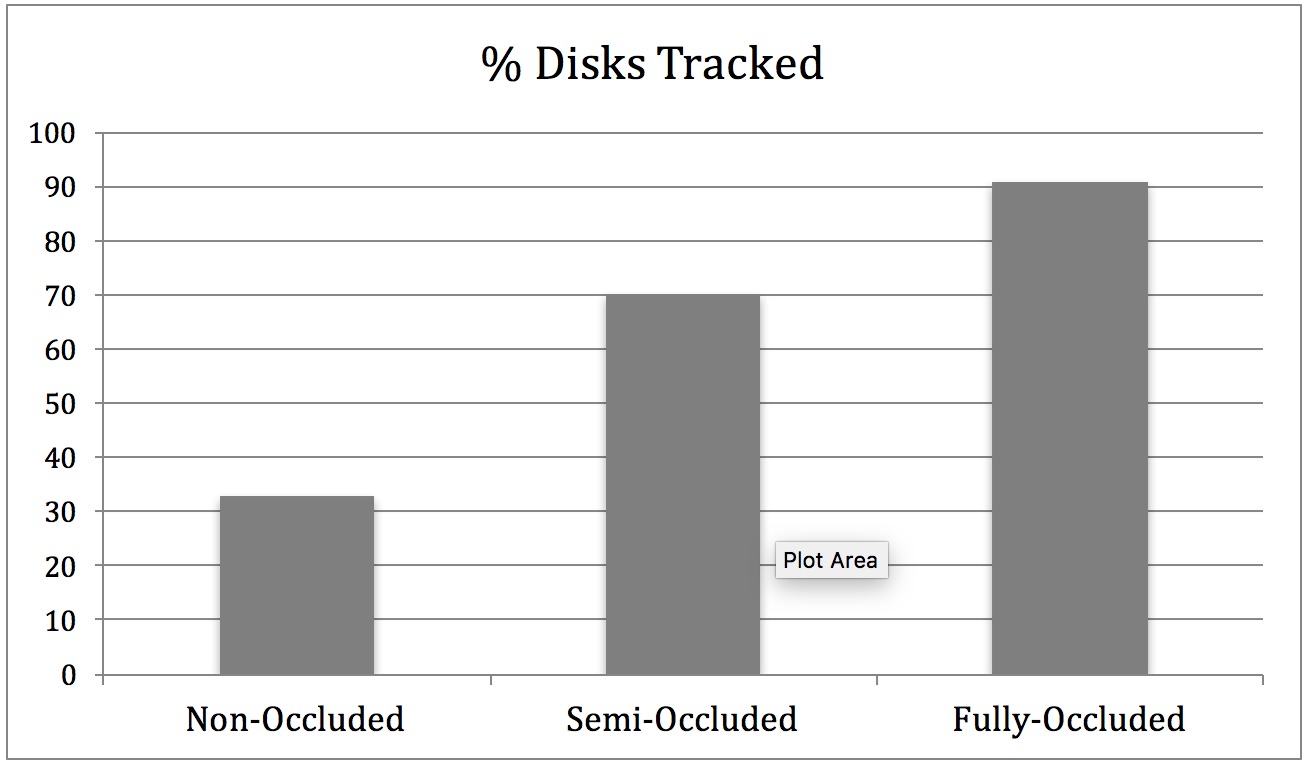 |
Results for "Visible Dispacement"
(Object Permanence) |
In Exp 2, when the moving occluders revealed that the disc was no longer behind them, the dolphins reliably turned toward the stationary occluder behind which the
invisibly-displaced disc had passed.
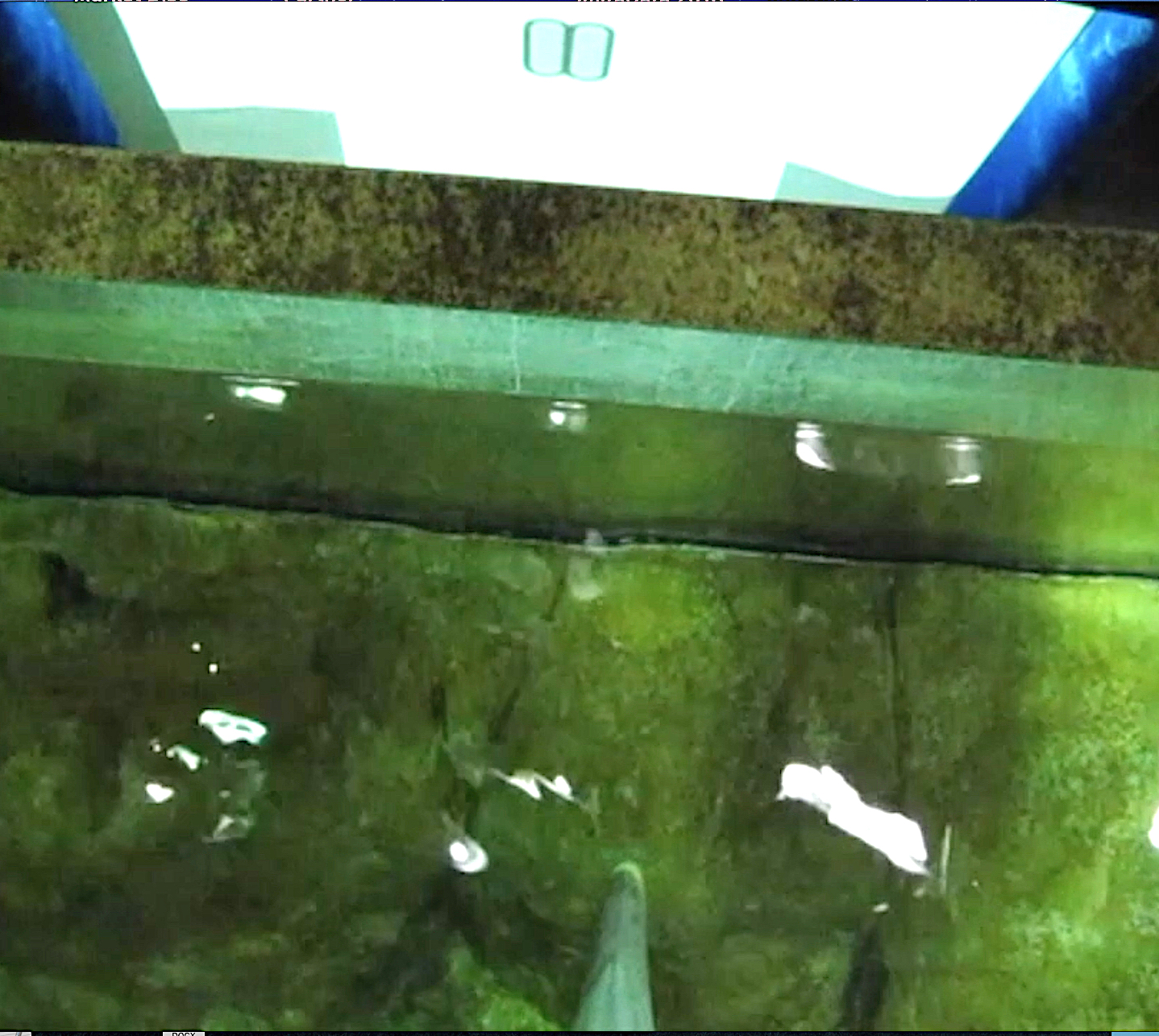
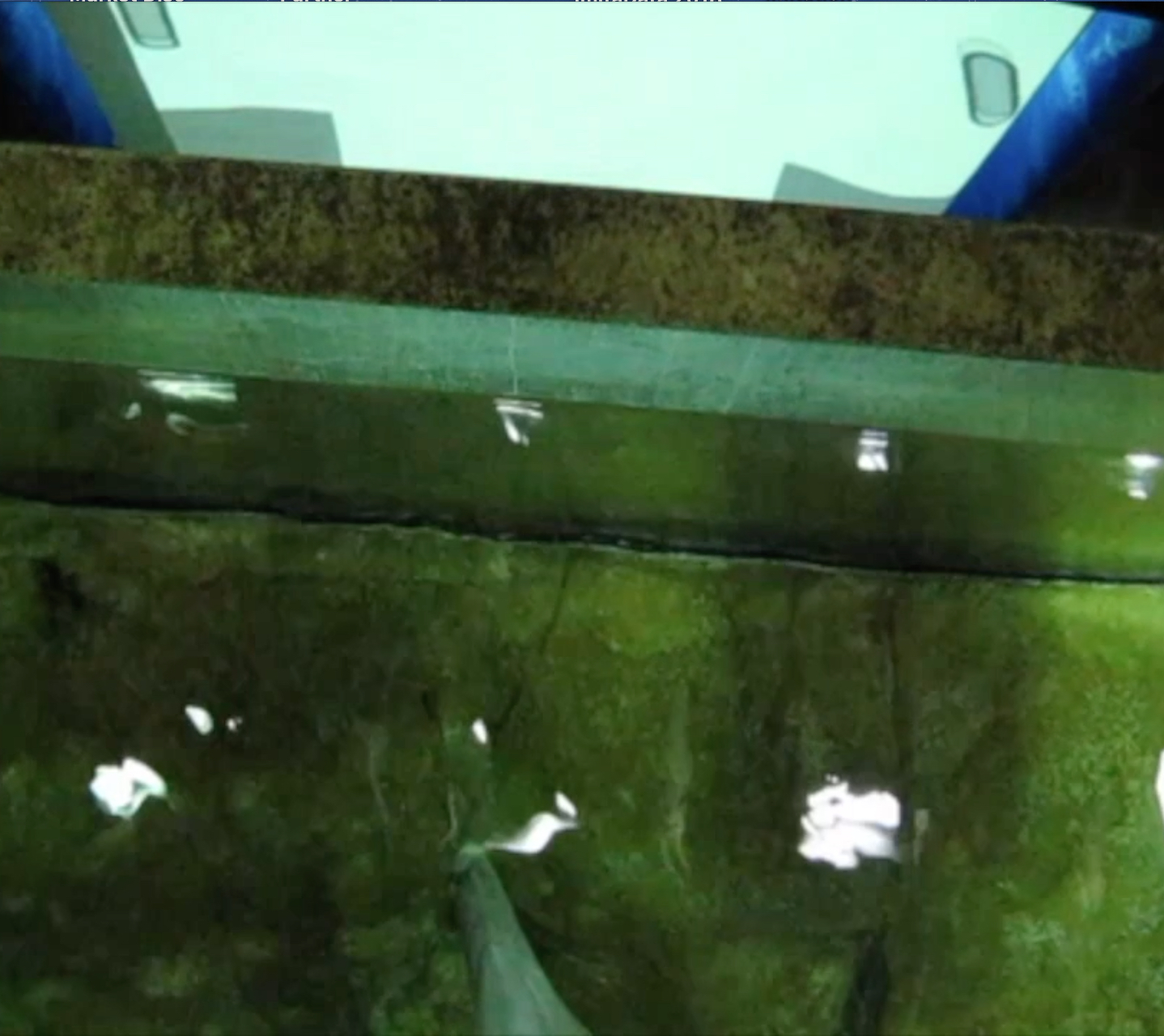 |
|
OVERHEAD VIEWS: When revealed that disc no longer behind ovals, dolphin turns toward occluder (on left) where disc must have been invisibly displaced
|
|
| | |
|
|
|
Social Attribution |
 |
| Johnson, C.M., Sullivan, J., Jensen, J. Buck, C.L., Trexel, J. & St. Leger, J. (2018) Prosocial predictions by Bottlenose dolphins (Tursiops spp) based on motion patterns in visual stimuli.
Psychological Science, 1-9.. |
|
GOALS OF RESEARCH:
|
Ask if dolphins will interpret moving images as
representing social interactions and, as a result,
can predict their subsequent "behavior"? |
|
RATIONALE:
|
In work with human infants (e.g. Premack & Premack, 1997; Hamlin et al, 2007; Kuhlmeier, 2013), subjects would, for example, watch a circle "try" to move up a hill and then either be "helped" to the top by a square, or "hindered" (pushed to the bottom) by a triangle. Such subjects tended to prefer the "friendly" shape, and predicted further pro/anti-social behavior from the respective shapes. Given that bottlenose dolphins can hunt collaboratively, form cooperative coalitions, and show epimeletic behavior (care-giving, even to non-kin), we wondered if they too would be inclined to interpret such interactions as "helping" or "hindering".
 |
|
Dolphins eager to begin "movie night" |
 |
METHODS: |
Same subjects/facilty/set-up, again scoring overhead video of the dolphins reacting to animated stimuli.
In this study, an oval (Target) was first repeatedly seen moving up toward a bright upper edge of the screen (like the ocean surface), and then wobbling back down. A different oval would then enter and move in either a "firendly" way (help=lifting it to the surface, or caress) or "unfriendly" way (hinder =push it to the bottom, or hit) toward the Target. Thereafter, all 3 ovals were seen, with the friendly and unfriendly leaving the screen in different directions, and the Target moving behind a central occluder.
| 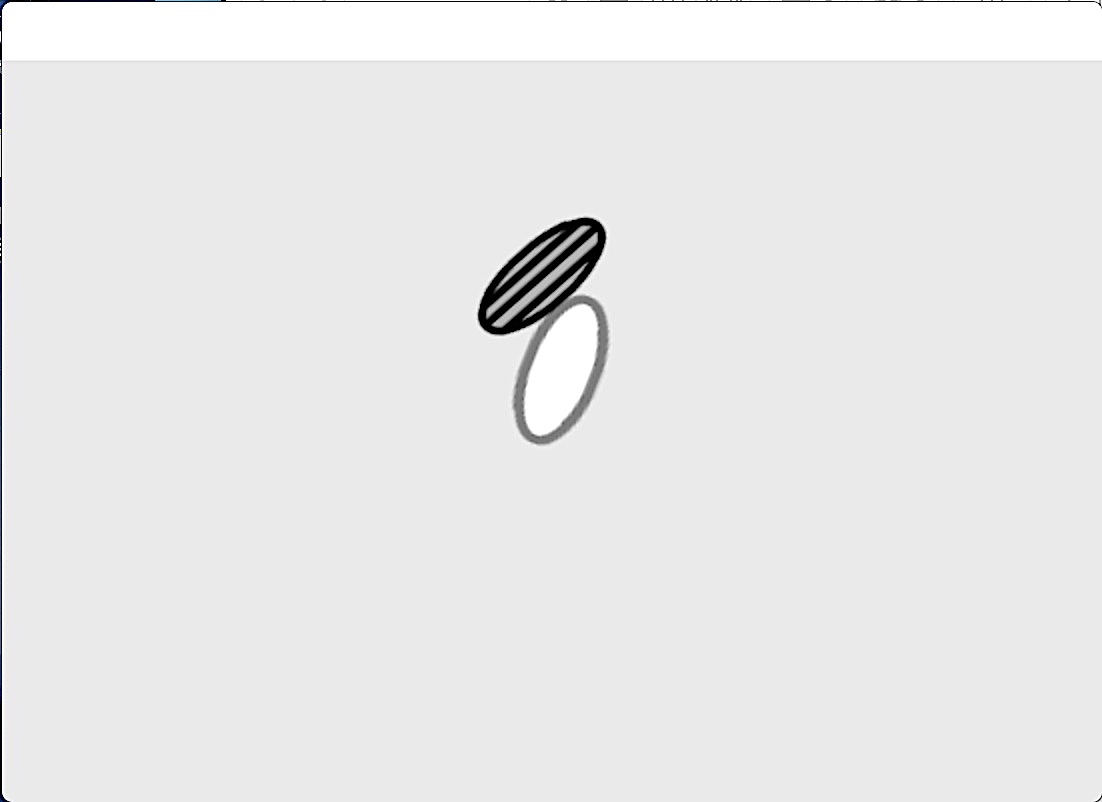
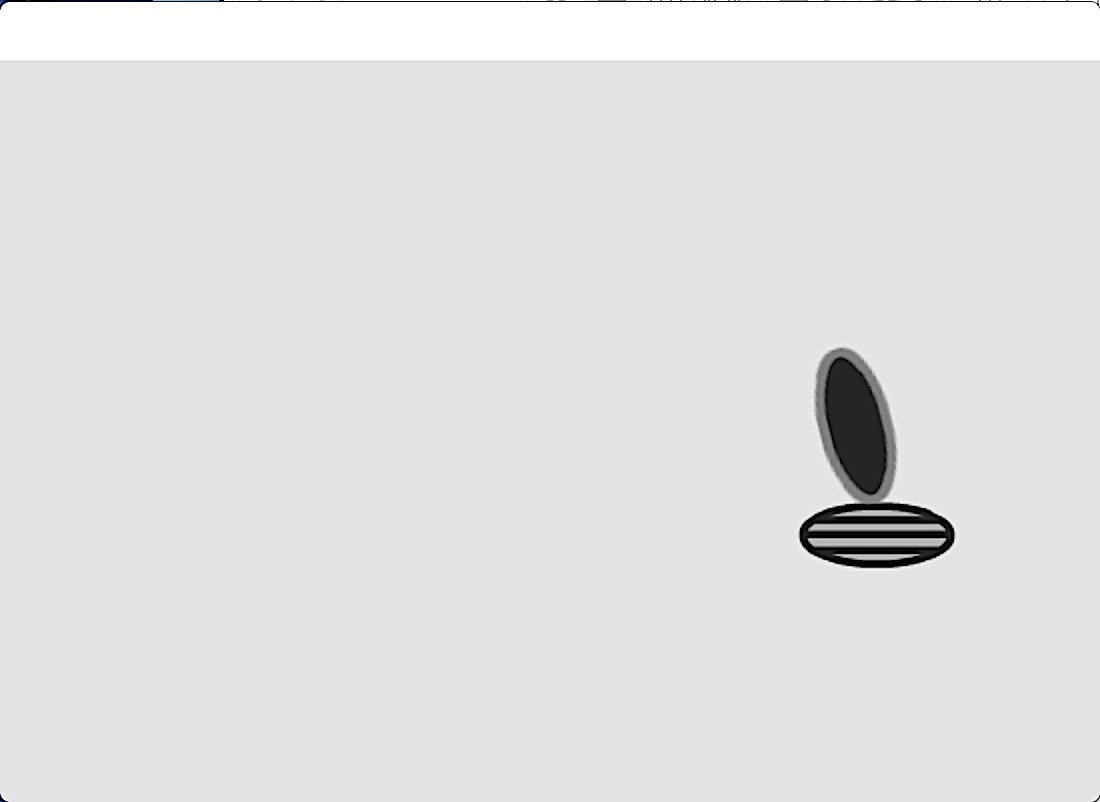
|
|
"Friendly" White helps Striped Target to surface. |
|
"Unfriendly" Black hinders Striped Target from surface |
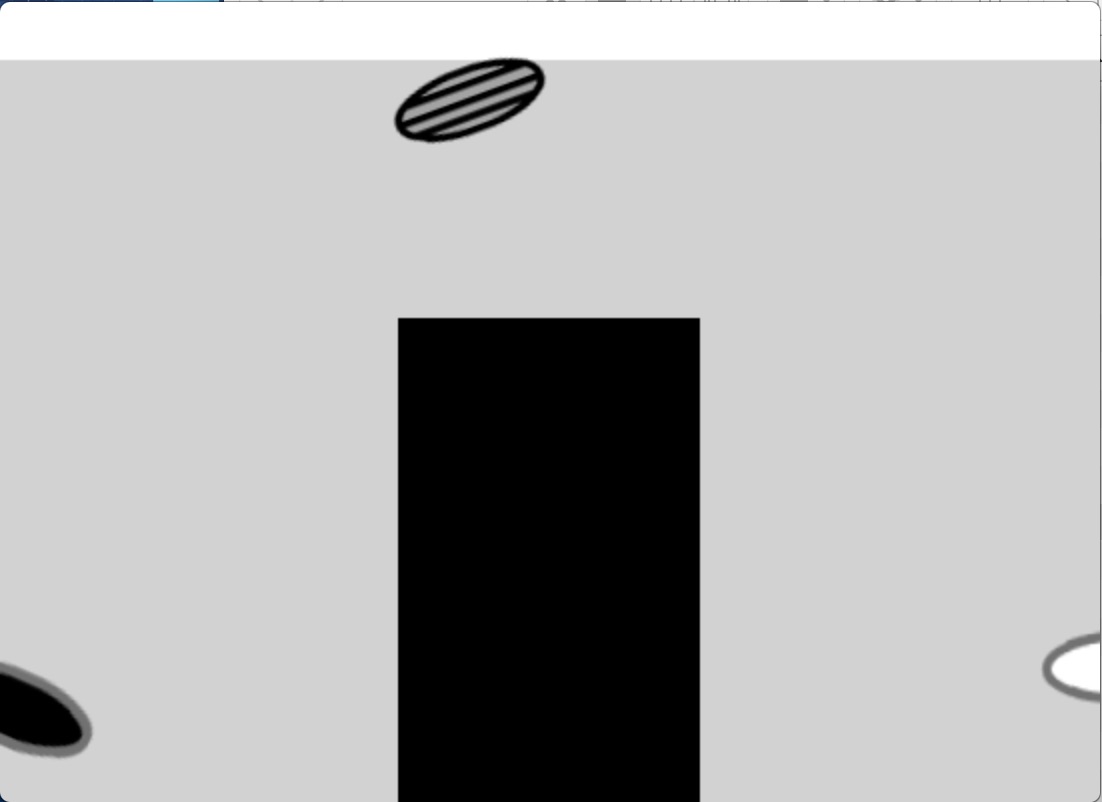
|
|
TEST STIMILI: "Friendly" & "Unfriendly" ovals leave to opposite sides. Then Target disappears behind occluder,
and dolphin will turn to the side from which it expects Target to reappear. |
|
RESULTS:
|
|
In anticipating the Target's emergence from behind the occluder, the dolphins reliably looked toward the side from which the "friendly" oval had moved. That is, the dolphins not only interpreted the movement of the ovals as "social", but subsequently predicted that the Target oval would preferentially follow the "friendly", over the "unfriendly", other.

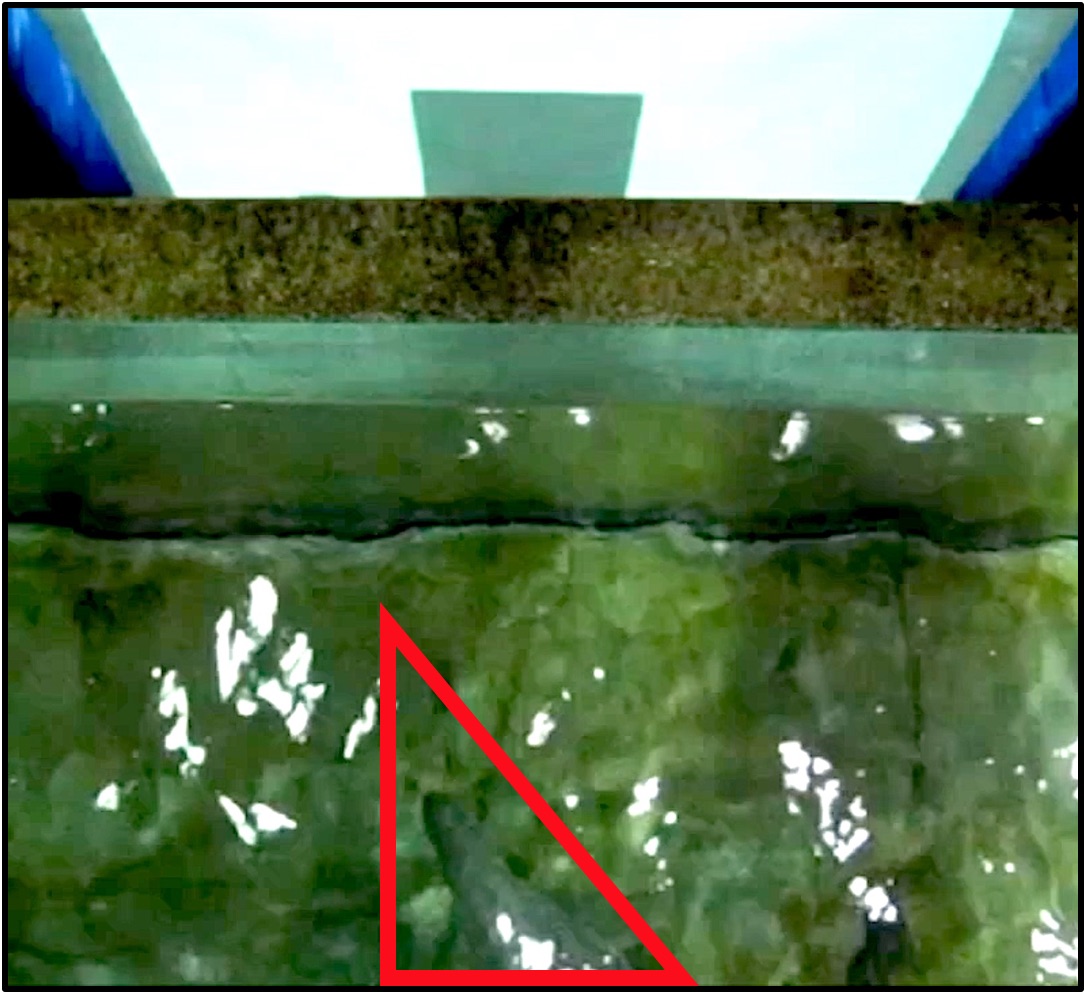
|
OVERHEAD VIEWS: Dolphin points head (in red triangle) in direction it expects Target to emerge from occluder.
Dolphins predicted that Tatget would follow "friendly" oval. |
When we changed the Target, and reversed the roles of the other ovals (now Black as "friendly" and White as "unfriendly") the dolphins continued to predict that the new Target would follow the "friendly" other.
Some of the dolphins also directed open-mouth and bubble blowing-displays toward these animations, social signals that they did not show in the similar Invisible Displacement study.
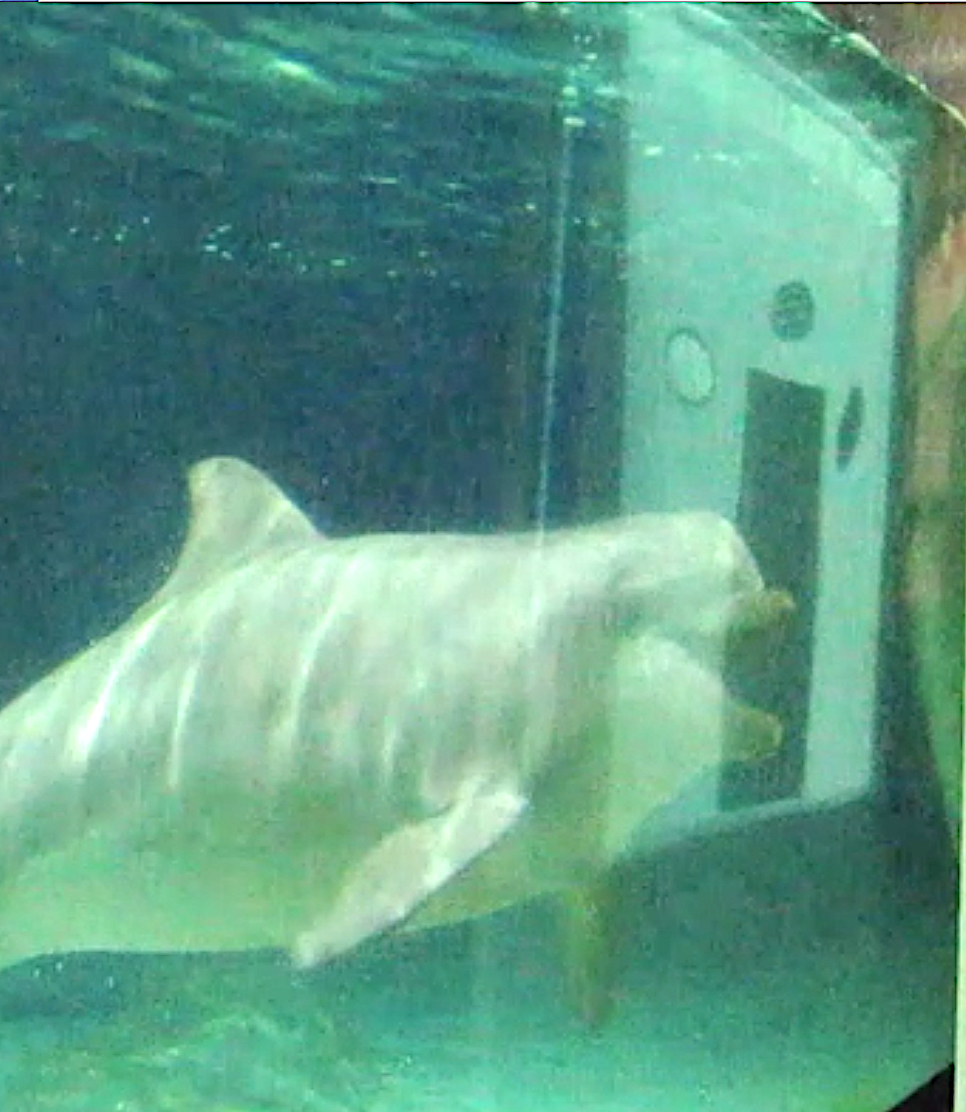 |
Unlike in previous study, dolphins emitted bubbles and directed open-mouth displays to these stimuli.
(Video reflected in glass.) |
 |
|
NOTE ON METHODS: |
Judging by these studies, animation of stimuli appears to be a particularly useful technique for addressing cognitive questions with dolphins.
This is especially true in the area of social cognition, since social variables are notoriously difficult to manipulate in the lab.
For further details on these studies, see citations above.
For links to additional research, see HOME page.
|  |
|
|
|
|
COLLABORATORS:
Jess Sullivan, Cara Buck, Julie Trexel, Jane Jensen
with special thanks to
Adam Tinkle, Dr. Judy St. Leger, Brittany Harirs, Scott Collins, Mike Scarpuzzi
and the staff & animals at Sea World San Diego's Rocky Point
SOME RELEVANT REFERENCES:
Caldwell, M. C., & Caldwell, D. K. (1966). Epimeletic (care-giving) behavior in cetacean. In K.S. Norris (Ed.) Whales, dolphins & porpoises, pp: 755-789. Berkeley, CA: University of California Press.
Collier-Baker E, Davis JM, Nielsen M, Suddendorf T (2006) Do chimpanzees (pan troglodytes) understand invisible displacement? Animal Cognition, 9: 55-61.
Fawcett, C. & Liszkowski, U. (2012). Infants anticipate others' social preferences. Infant and Child Development, 21, 239-249.
Gergeley, G., Nadasdy, Z., Csibra, G. & Biro, S. (1995). Taking the intentional stance at 12 months of age. Cognition, 56, 165-193.
Hamlin, J.K., Wynn, K. & Bloom, P. (2007). Social evaluation by pre-verbal infants. Nature, 450, 557-560.
Harley, H.E. (2013) Consciousness in dolphins? A review of recent evidence. Journal of Comparative Physiology A 199: 565-582.
Herman, L.M., Abichandani, S.L., Elhajj, A.N., Herman, E.Y.K., Sanchez, J.L. and Pack, A.A. (1999) Dolphins (Tursiops truncatus) comprehend the referential character of the human pointing gesture. Journal of Comparative Psychology, 113: 347-364.
Herman, L.M., Morrel-Samuels, P. and Pack, A. A. (1990). Bottlenosed dolphin and human recognition of veridical and degraded video displays of an artificial gestural language. Journal of Experimental Psychology: General, 119, 215-230.
Jaakkola, K., Guarino, E., Rodriguez, M., Erb, L. and Trone, M. (2010). What do dolphins (Tursiops truncatus) understand about hidden objects? Animal Cognition, 13:103-120.
Johnson, C.M. (2001). Distributed primate cognition: A review Animal Cognition 3, No 4:167-183
Johnson, C.M. (2004). The micro-ethology of social attention: "Brightness" in bonobos. Folia Primatologica: 75(suppl 1), 175.
Johnson, C.M. & Karin-D'Arcy, M.R. (2006). Social attention in primates: A behavioral review. Aquatic Mammals (Special Issue on Comparative Cognition), 32:423-442.
Johnson, C.M. (2010). Observing cognitive complexity in primates and cetaceans. International Journal of Comparative Psychology, 23:587-624
Johnson, C.M. (2015). The cognitive ecology of dolphin social engagement. In D.L. Herzing & C.M. Johnson (Eds) Dolphin Communication & Cognition, MIT Press.
Kuhlmeier, V., (2013). The social perception of helping and hindering. In M.D. Rutherford (Ed.) Social Perception: Detection and interpretation of animacy, agency and intention,pp. 283-303. Cambridge, MA: MIT Press.
Pack, A. (2015). Experimental studies of dolphin cognitive abilities. In D.L. Herzing, & C.M. Johnson (Eds.) Dolphin communication & cognition, pp:175-200. Cambridge MA: MIT Press.
Pepperberg IM, Funk MS (1990) Object permanence in four species of psittacine birds: an African grey parrot (Psittacus erithacus), an Illiger mini macaw (Ara maracana), a parakeet (Melopsittacus undulatus) and a cockatiel (Nymphicus hollandicus). Animal Learning and Behavior 18: 97-108.
Premack, D. & Premack, A.J. (1997). Infants attribute value to the goal-directed actions of self-propelled objects. Journal of Cognitive Neuroscience, 9, 845-856.
Xitco, M.J., Gory, J.D. Kuczaj, S.A. (2001) Spontaneous pointing by bottlenose dolphins (Tursiops truncatus) Animal Cognition, 4: 115-123.
|
|













